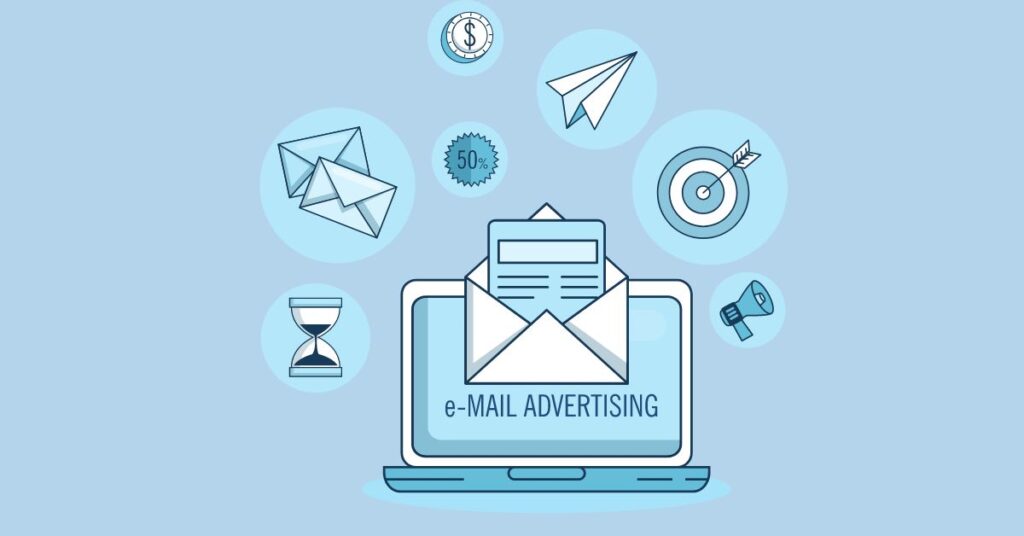Comprehensive Road Map to Starting eCommerce Business
eCommerce refers to the buying and selling of goods and services online. This business model has become increasingly popular in recent years thanks to the convenience and accessibility it offers buyers and sellers. Starting eCommerce business can be overwhelming, with many factors to consider and decisions to make. A comprehensive guide map can help you cover all the important bases and avoid common pitfalls. This guide will serve as a roadmap for your e-commerce journey, giving you a clear path to follow and keeping you on track.
This comprehensive guide provides practical, actionable advice to help you start and grow a successful eCommerce business. We’ll cover everything from market research and setting up your business to developing your website, sourcing products, and managing finances. Whether a beginner or an experienced entrepreneur, this guide is designed to help you navigate the challenges of starting an eCommerce business and achieving your goals.

Market Research
Knowing your target audience is crucial to the success of your e-commerce business. This involves understanding customers’ needs, wants, and buying habits.
You can conduct surveys, focus groups, or analyze data to gain insights into your target audience. This information will inform your product offerings, marketing strategies, and overall business decisions.
Understanding the competition is a critical component of market research. You can identify your top competitors and analyze their strengths and weaknesses.
By understanding what they’re doing right and what they’re doing wrong, you can differentiate yourself and better position your business for success.
Staying on top of market trends is vital for staying relevant and ahead of the competition. You can use tools like Google Trends, industry reports, and trade publications to stay current on the latest market trends. This information can help inform your product offerings, marketing strategies, and overall business decisions.
Your unique value proposition is what sets you apart from your competition. It’s the reason why customers should choose your business over others.
To define your unique value proposition, consider what you offer that your competition doesn’t and how you can differentiate yourself in the market. This will be a critical factor in attracting customers and growing your business.

An example of a value proposition:
“At Best Shoes, we offer high-quality, stylish footwear at an affordable price. Our shoes are handcrafted by skilled artisans with a 100% satisfaction guarantee.
We’re passionate about delivering exceptional customer service, and our friendly and knowledgeable staff is always available to help you find the perfect pair of shoes. Choose “Best Shoes” for footwear that combines style, comfort, and value.”
In this example, the value proposition combines high-quality, stylish footwear at an affordable price, handcrafted by skilled artisans, backed by a satisfaction guarantee, and supported by exceptional customer service. This sets the business apart from competitors and provides a clear reason for customers to choose Best Shoes over other footwear brands.

Setting Up Your Business
Choosing the right business structure is an important decision that will have long-term implications for your eCommerce business. Standard options include sole proprietorship, partnership, LLC, corporation, and others.
Consider liability protection, taxes, and management structure when making your decision. Consult a lawyer, accountant, or small business organization for advice.
Registering your business is a legal requirement in most jurisdictions. This process typically involves filling out forms and paying a fee. The specific requirements will vary depending on your location and business structure. You can check with your local government or a business organization for guidance.
Depending on your location and the type of products you sell, you may be required to obtain various licenses and permits. This can include a sales tax permit, business license, and others. It’s essential to research the requirements in your area and comply with all regulations.
Setting up a separate bank account for your business is essential in keeping your personal and business finances separate. This makes tracking your income and expenses easier and can also help protect your personal assets.
You can visit your local bank or an online banking provider to set up a business bank account. For example, if you have a business structure like an LLC or corporation, you may need to provide documentation to open a business bank account.

Developing your eCommerce platform
Selecting the right eCommerce platform is crucial to the success of your business. You should consider factors like ease of use, features, cost, scalability, and integration with other tools.
Popular options include Shopify, WooCommerce, Magento, and others. You can try out demos or talk to other e-commerce business owners to understand what platform would work best for you.
Setting up payment processing is a key aspect of launching your e-commerce business. You’ll need to choose a payment processor, such as PayPal, Stripe, or Square, and integrate it into your platform. You’ll also need to set up a merchant account, a special bank account that allows you to accept payments from customers.
Your website is the face of your eCommerce business, and creating a professional, user-friendly, and visually appealing site is necessary. You can use templates, hire a web designer, or use a website builder to make your site.
Make sure to include essential elements such as product pages, a shopping cart, and straightforward navigation. You should also test your site on different devices and browsers to ensure a consistent customer experience.
There are a variety of tools and apps that can help you manage and grow your eCommerce business. For example, you can integrate email marketing software, analytics tools, shipping and fulfillment apps, etc.
List the tools and apps you need, and look for ones that integrate seamlessly with your e-commerce platform. This will help streamline your operations and provide valuable insights into your business.

Product Sourcing
Before starting to sell products, you must determine what you will sell. Consider market demand, competition, and profitability factors when choosing your product categories.
You can also conduct market research, such as surveys or focus groups, to better understand what products would be popular with your target audience.
Sourcing products from wholesalers is a popular option for eCommerce businesses, as it allows you to purchase products in bulk at a lower cost. You can find wholesalers through trade shows, online directories, or by searching for suppliers in your industry.
When sourcing from wholesalers, it’s important to negotiate terms such as pricing, minimum order quantity, and delivery time to ensure a profitable and sustainable business model.
Creating your own products can set you apart from your competition and provide higher profit margins. This option can be especially advantageous if you have a unique product idea or a niche market. Consider manufacturing costs, design, and product testing when creating your own products. You can work with a manufacturer or consider alternative options such as print-on-demand or custom product design services.
Once you have products to sell, you’ll need to manage your inventory and order fulfillment process. This involves tracking stock levels, processing orders, and shipping products to customers.
You can use software or apps to automate this process or outsource to a fulfillment service if you need more resources to manage it in-house. Establishing policies for returns and exchanges is also important to ensure customer satisfaction.

Marketing and Promotions
A marketing plan is crucial to your eCommerce strategy, outlining how you will reach and engage your target audience. Your plan should include your budget, target audience, marketing channels, and specific goals. For example, you might invest in search engine optimization or online advertising to increase website traffic.
Social media is a powerful tool for reaching and engaging customers, allowing you to share content, connect with your audience, and build brand awareness.
Decide which platforms are best for your business, such as Facebook, Instagram, or Twitter, and develop a content strategy to keep your followers engaged. You can also run social media advertisements to reach a wider audience, targeting specific demographics and interests.
Email marketing is a cost-effective way to reach customers and promote products. Create a list of subscribers by offering opt-ins on your website, and segment your list based on purchasing history and preferences.
You can then create and send targeted campaigns, such as promotional offers, newsletters, and product updates, to keep your customers informed and engaged.
Discounts and promotions can be a great way to incentivize customers to purchase, boost sales, and drive repeat business. Consider offering special deals, such as limited-time discounts or buy-one-get-one-free offers, to attract customers and create a sense of urgency.
You can also run promotional campaigns, such as contests or giveaways, to engage your audience and build brand loyalty. Be sure to follow up with high-quality customer service to keep your customers coming back.

Customer Support and Engagement
A robust customer support system is essential for maintaining customer satisfaction and growing a loyal customer base. Consider using a variety of channels for customer support, such as email, phone, live chat, or social media, to ensure that you are easily accessible to your customers.
You can also invest in customer relationship management (CRM) software to help you manage and track customer interactions, ensuring a seamless and personalized experience for each customer.
A timely and effective response to customer inquiries is critical to building trust and demonstrating your commitment to customer satisfaction.
Make sure to respond to customer inquiries promptly, whether it’s via email, phone, or social media, and provide clear and accurate information to help resolve any issues.
You can also offer proactive support, such as product recommendations or troubleshooting tips, to proactively address customer needs.
Building customer loyalty is essential for long-term success, as repeat customers are likelier to make additional purchases and refer others to your business.
Offer personalized experiences, such as tailored promotions and customized product recommendations, to keep customers engaged and coming back. Consider creating a loyalty program or offering rewards for repeat business, such as special discounts or exclusive promotions, to show appreciation and encourage repeat purchases.
Gathering customer feedback is essential for improving your business and keeping customers satisfied. Consider using customer surveys, online reviews, or focus groups to gather feedback on your products, website, customer service, and more.
Use the feedback to make improvements, such as updating your product offerings or streamlining your checkout process, to enhance the customer experience and drive repeat business.
Additionally, responding to customer feedback shows that you value their opinions and care about their experience, further building trust and loyalty.

Finances and Bookkeeping
Understanding the financial side of your business is critical to its success. Familiarize yourself with key financial metrics, such as revenue, profit margins, and return on investment (ROI), to measure the success of your business and make informed decisions about where to allocate resources. Make sure to keep detailed records of all your transactions and keep track of your expenses, such as marketing, product, and overhead, to get a clear picture of your financial performance.
Accurately tracking expenses is essential for maintaining control over your finances and making informed decisions about your business. Consider using accounting software, such as Quickbooks or Xero, to automate the process of tracking expenses and generating financial reports, making it easier to stay on top of your finances.
Ensure to keep receipts, invoices, and other records of all expenses, as these, may be required for tax purposes or to provide proof of a transaction.
Understanding and staying on top of your tax obligations is critical to avoiding penalties and fines. Familiarize yourself with your tax obligations, such as sales, income, and payroll taxes, and keep detailed records of all transactions to accurately calculate your tax liability.
Consider working with an accountant or tax professional to help you navigate the tax requirements for your business and ensure that you stay compliant with all applicable laws.
Developing a budget and financial plan is essential for setting financial goals, tracking expenses, and making informed decisions about your business.
Consider creating a budget for your business, considering revenue projections, marketing costs, product costs, and other expenses to help you plan for future growth and ensure financial stability.
Make sure to regularly review and adjust your budget as your business grows, taking into account changes in expenses, revenue, and other financial metrics, to ensure that you stay on track and reach your financial goals.

That’s A Wrap – Starting an eCommerce Business
Starting an eCommerce business can be a challenging but rewarding experience. Following the comprehensive guide map outlined in this blog post will give you a solid foundation to build upon as you grow and scale your business. Each step is crucial to your success, from researching your target audience and selecting your products to setting up your website and marketing your brand.
Additionally, it’s necessary to continuously evaluate and adjust your strategy as needed to stay ahead in the ever-evolving e-commerce landscape. Starting a business takes time and hard work, but you can turn your dream into a thriving online store with dedication and the right resources. Want to start your own eCommerce business? Why not take action right now. We can help you get started.







